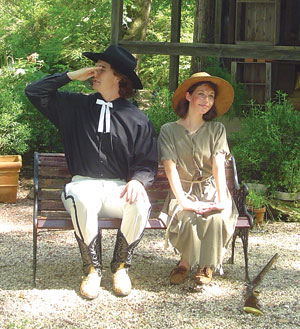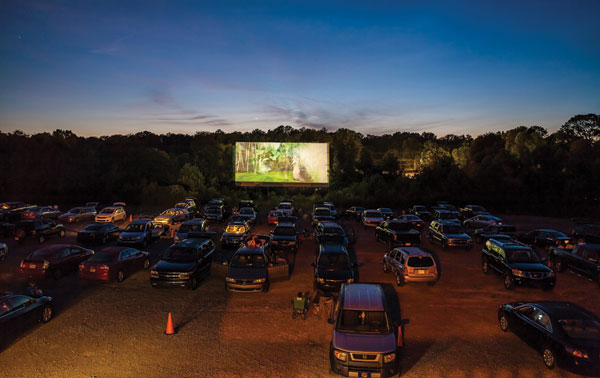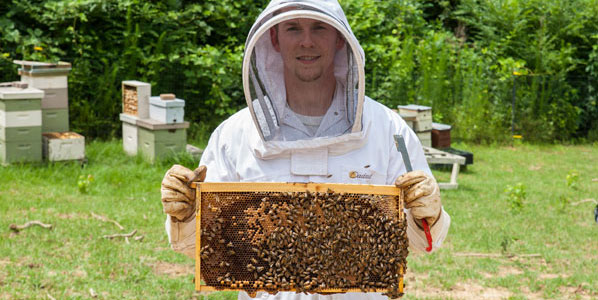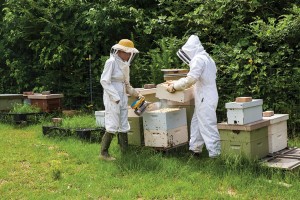OHV park exceeds creators’ wildest dreams
 Story by Graham Hadley
Story by Graham Hadley
Photos by Michael Callahan
Like many other teens in St. Clair County, Jason White and his friends loved riding motorcycles and ATVs through the abundant trails and woods in this region of Alabama.
But after they finished up school, places to ride became harder and harder to find. As often as not, they would pack up their bikes and four-wheelers and head out to a designated riding area, only to find it wasn’t open. The other option was to find places to ride that were not necessarily designated for off-highway-vehicles or open to the public.
“We would drive all the way out there just to find the place closed. We could not find places to ride where we would not get into trouble,” he said.
That’s when he got the idea to create an area dedicated to OHV riding that would always be open. He discussed the idea with the other people who rode, and they started an effort to make it a reality.
The process took about a year.
“We were looking for a place, trying to make it happen. People would drop in and out of it. Then this property came up for sale behind my grandfather’s land — it’s actually some property we rode on growing up,” Jason said.
The land was purchased, and the outdoor park, The Ridge, was born along the mountain ridge overlooking Springville. Originally opening with just a few miles of trails and some practice tracks, the park has grown beyond Jason’s greatest expectations.
And true to his original idea, The Ridge is always open, barring severe weather.
“We wanted a place that was guaranteed to be open,” he said.
Jason, his brother Josh White, and their dad, Greg, run The Ridge. After they purchased the land, they spent six months getting it ready to open, with 15 miles of trails and one track. Josh also put a website together for the new park.
“We had around 200 people show up opening day,” Jason said.
That was seven years ago. “We started off in an RV up by the road, just nice and simple. Then we got a singlewide donated for us to use. We were getting around 100 riders a day.”
Jason admits that, since the economy slowed, so has the volume of riders, down to about half what they were seeing then, but that has not kept them from expanding The Ridge, not only with new places to ride and different riding experiences, but with other features as well.
Today, The Ridge boasts around 40 miles of trails, everything from absolute beginner to expert, trails specifically for single-track riding on bikes to paths wide enough to accommodate side-by-sides. They have multiple tracks, each one tailored to different riding needs. There is a track for young riders just learning and other tracks, like Area 51, a triangle with different jumps and different faces so riders can practice a variety of competitive skills.
Jason says about 60 percent of their visitors are single-track motorcycle riders, and they have a dedicated 14-mile single-track loop that starts out easy and works its way up to an area called The Beast that is expert level.
More than it was
As much as OHV riding is still the focus of The Ridge, the dream of an OHV park that was always open for riders has become a dream of a weekend getaway retreat for families and groups, with a little something for everyone.
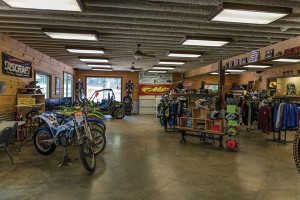 Jason and his Dad run a custom insulation installation contracting business, White Urethane, as their regular job, but they have brought that construction know-how and work ethic to the park. It now has primitive and RV camping with hookups, cabins and hotel rooms, and meeting facilities for visitors and groups to use. They built most of it themselves, with some help from other family members.
Jason and his Dad run a custom insulation installation contracting business, White Urethane, as their regular job, but they have brought that construction know-how and work ethic to the park. It now has primitive and RV camping with hookups, cabins and hotel rooms, and meeting facilities for visitors and groups to use. They built most of it themselves, with some help from other family members.
During the peak seasons, usually when the weather is cooler in the fall and spring, a restaurant is open, as is a gear store where people can buy everything from used motorcycles to riding equipment and rent ATVs and helmets. Helmets are required for anyone riding in the park unless the vehicle they are in has a roll-cage and the manufacturer requirements don’t include helmets.
Jason points out the helmet rule is an absolute, as are the other park rules, mostly about riding safely and respecting other park visitors who are there to enjoy themselves, too. “We want this to be a family-oriented place where people can come and spend a weekend and get away,” he said. And so far, that has usually been the case. Jason said they have only had to have two people removed from the park for misbehaving since they opened. “Generally, we have a nice group of folks out here.”
While people still mostly come to ride, The Ridge also boasts zip-line tours — a mix of the more sedate tours and the faster rides that are growing in popularity. There are five lines in all, culminating in the most exciting run at the end.
They also have two stocked fishing ponds and a specially designed competition-level 18-hole disc golf course.
Jason and his brother had set up a basic course to just play around with and give visitors something more to do at the park.
“Some guys from the Birmingham Disc Golf Club came out and looked at things.” They changed the course around to more official specifications and then held a two-day competition there.
They also have some rock-climbing areas and one section where they can do rappelling instruction.
In the early days of The Ridge, visitors could come out and enjoy free concerts. Like the riding, when the economy tightened up, the free concerts faded. But the stage and performing areas are still in place, and Jason wants music to one day again be a regular part of their venue. “We just did a three-day concert here,” he said, noting he is working on bringing more of the same to the area in the near future.
A new focus
“Resort” is the word Jason uses to describe where he sees the park heading. With the hotel rooms, cabins, meeting rooms and multi-use recreational facilities, The Ridge is not only attracting individual riders and families, but also organizations, churches and youth groups looking for a place to hold retreats.
“We are starting to look at more online and reservation bookings. That always makes things easier for us, knowing exactly what groups and how many people are coming to the park,” he said. “We did a wedding rehearsal, they stayed the night; and two youth groups; and an adult group, just in the past six months.”
He recently got his ropes-course certification at Shocco Springs Baptist Conference Center in Talladega and plans to add a cooperative ropes course to The Ridge soon.
The Ridge has also hosted Panther Runs, described on the www.pantherrun.net website as: “Mud, ropes, barrels, tires, rocks, wood, water, logs, sand and dirt mixed with a big bowl of adrenalin and spread out into a 5K (Unleashed version is longer) mud run/obstacle challenge.”
Even as he looks to find new ways for people to enjoy themselves at The Ridge, their core focus is riding — and a big part of that are OHV events that draw hundreds of enthusiasts here for several days at a time.
Whether it is the Southeast Cross Country Association Buddy Hare Scramble or some other competition, The Ridge generally holds six or more major riding events a year, which in part help support the park all year long.
And all of it goes to maintaining Jason’s original vision: To have a park where riders have a guaranteed place to ride.
For upcoming events and to check on space availability at The Ridge, visit their website at www.ridgeriding.com.






































